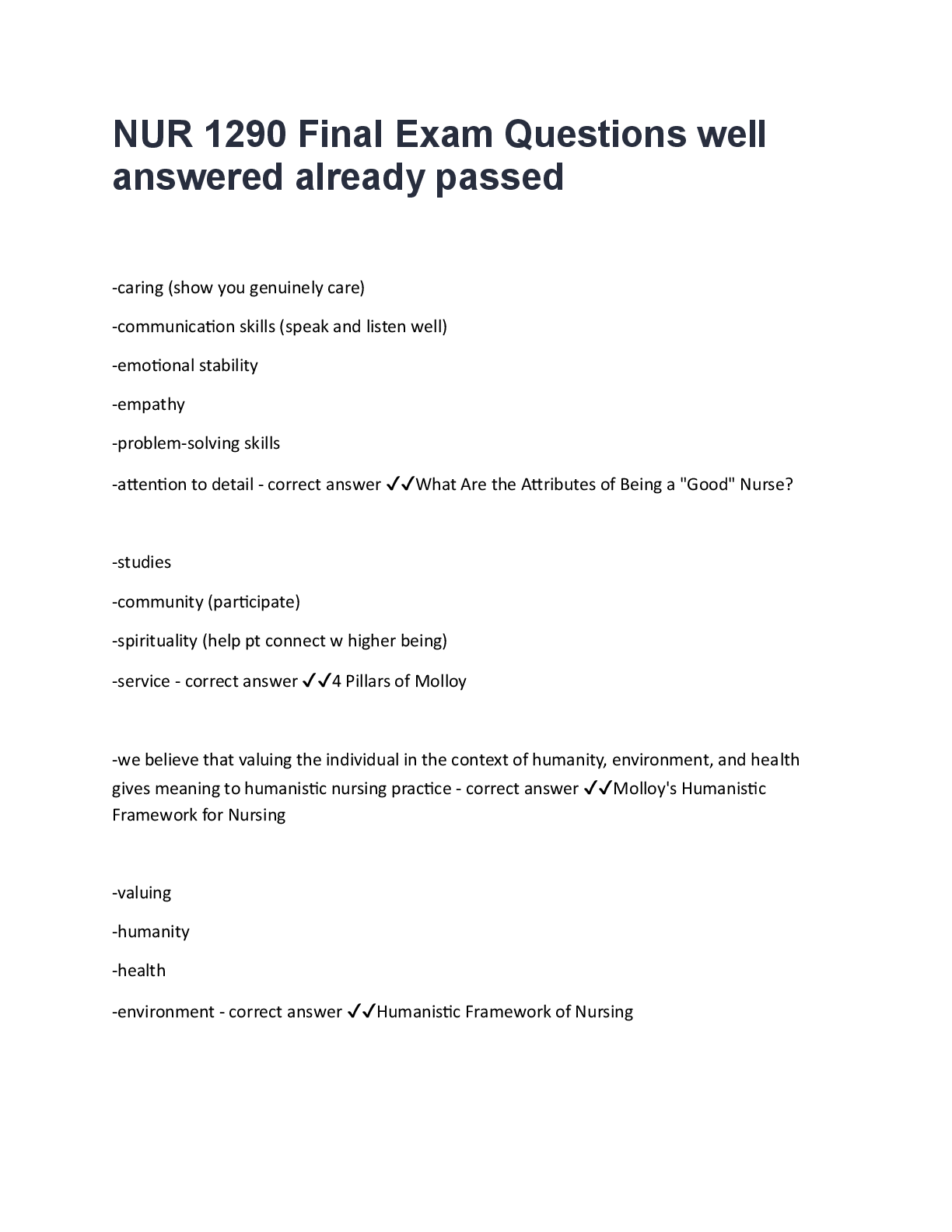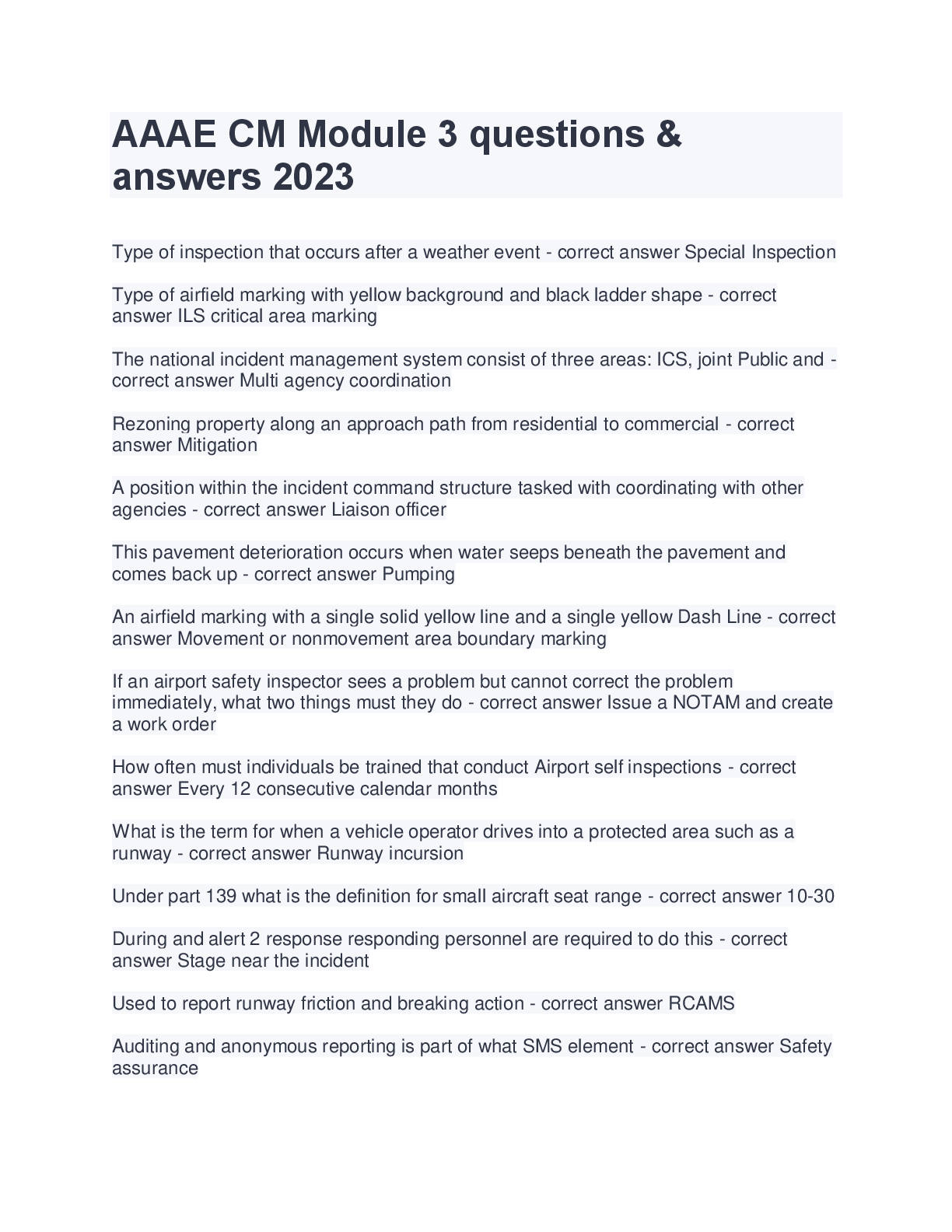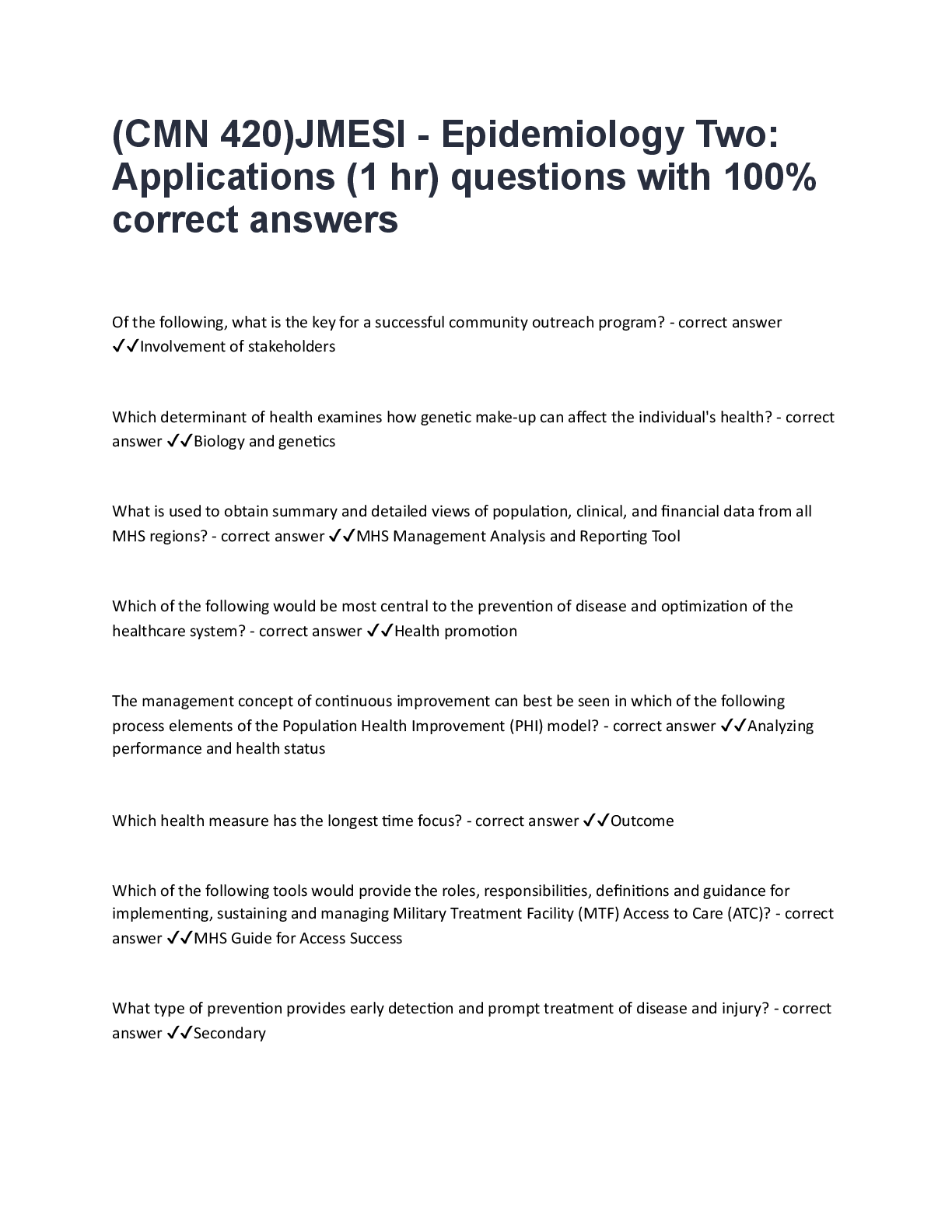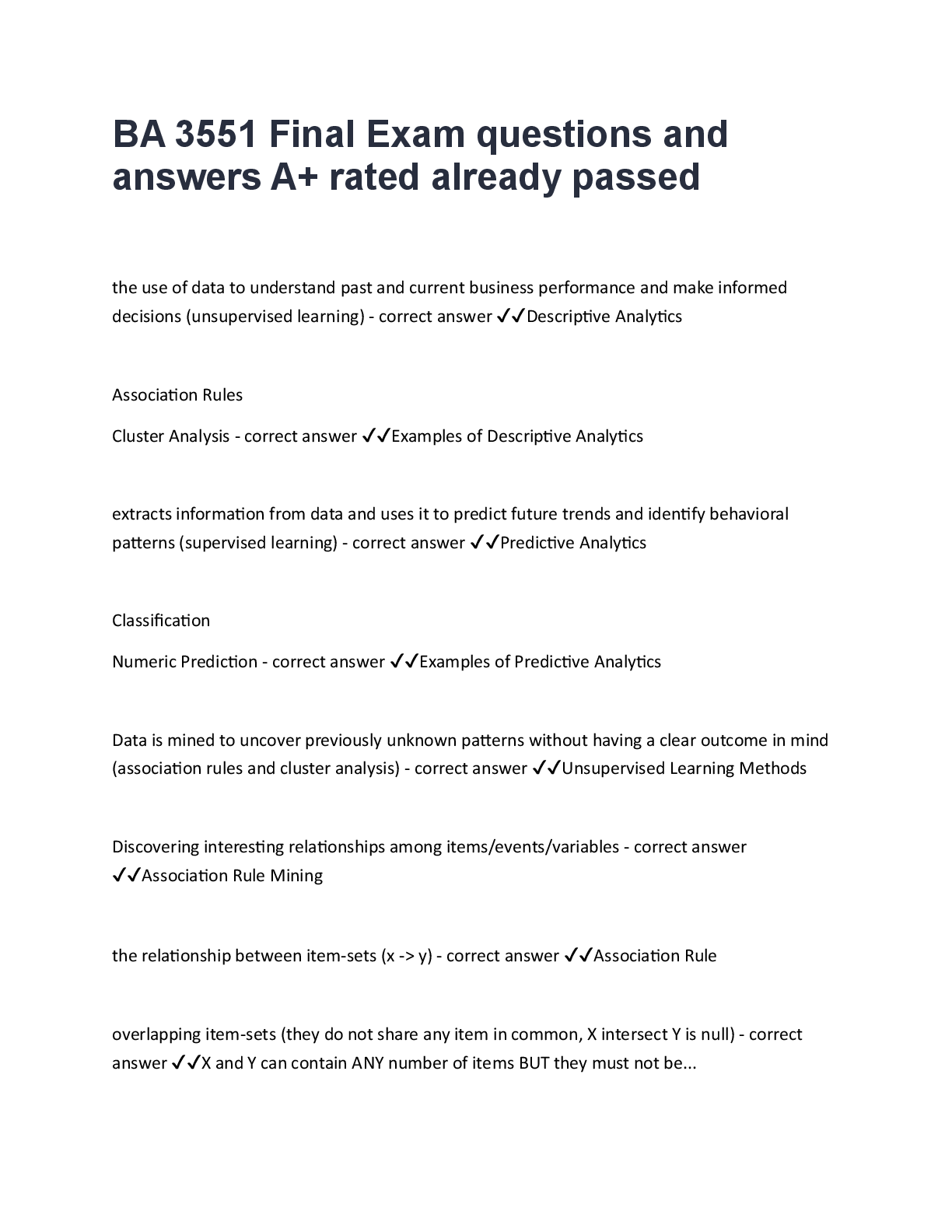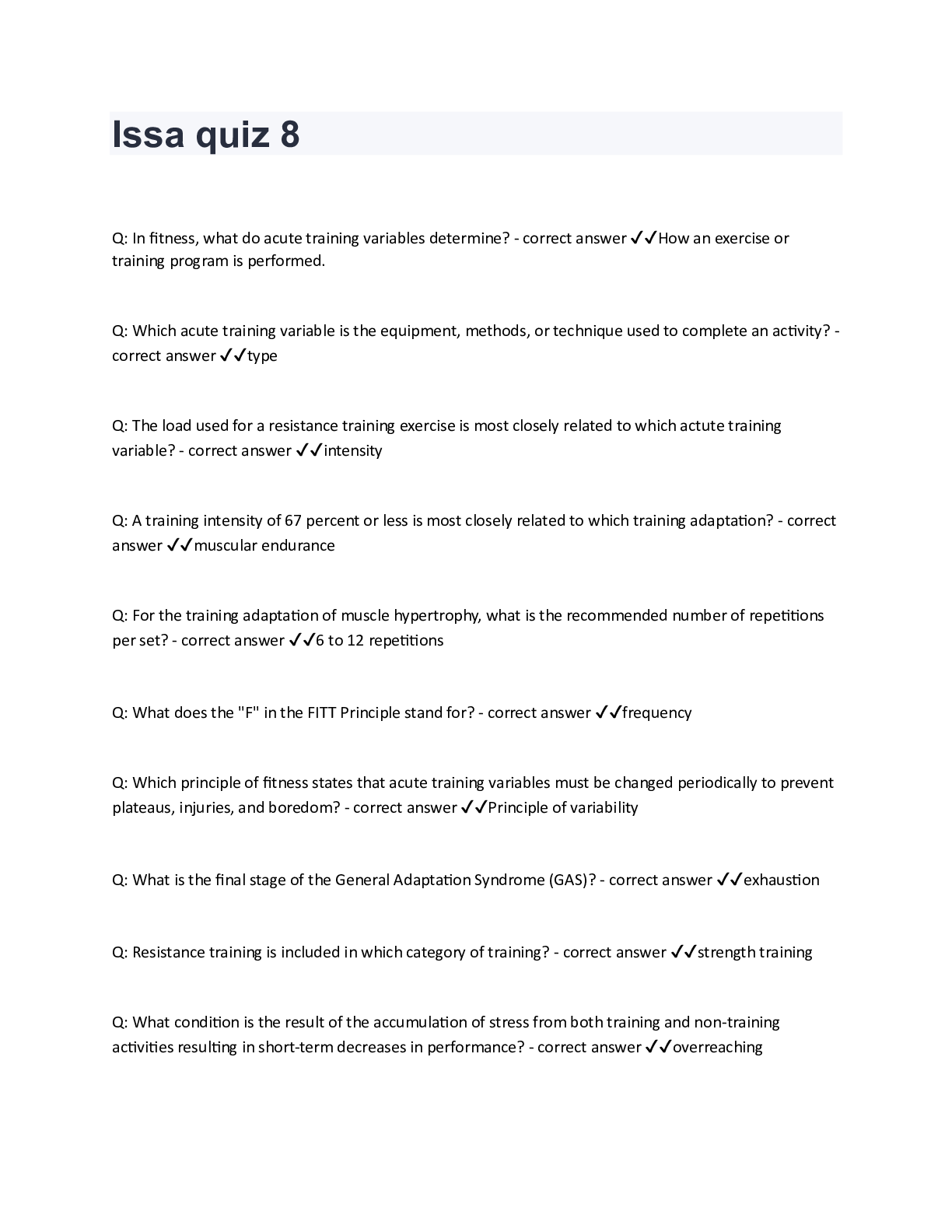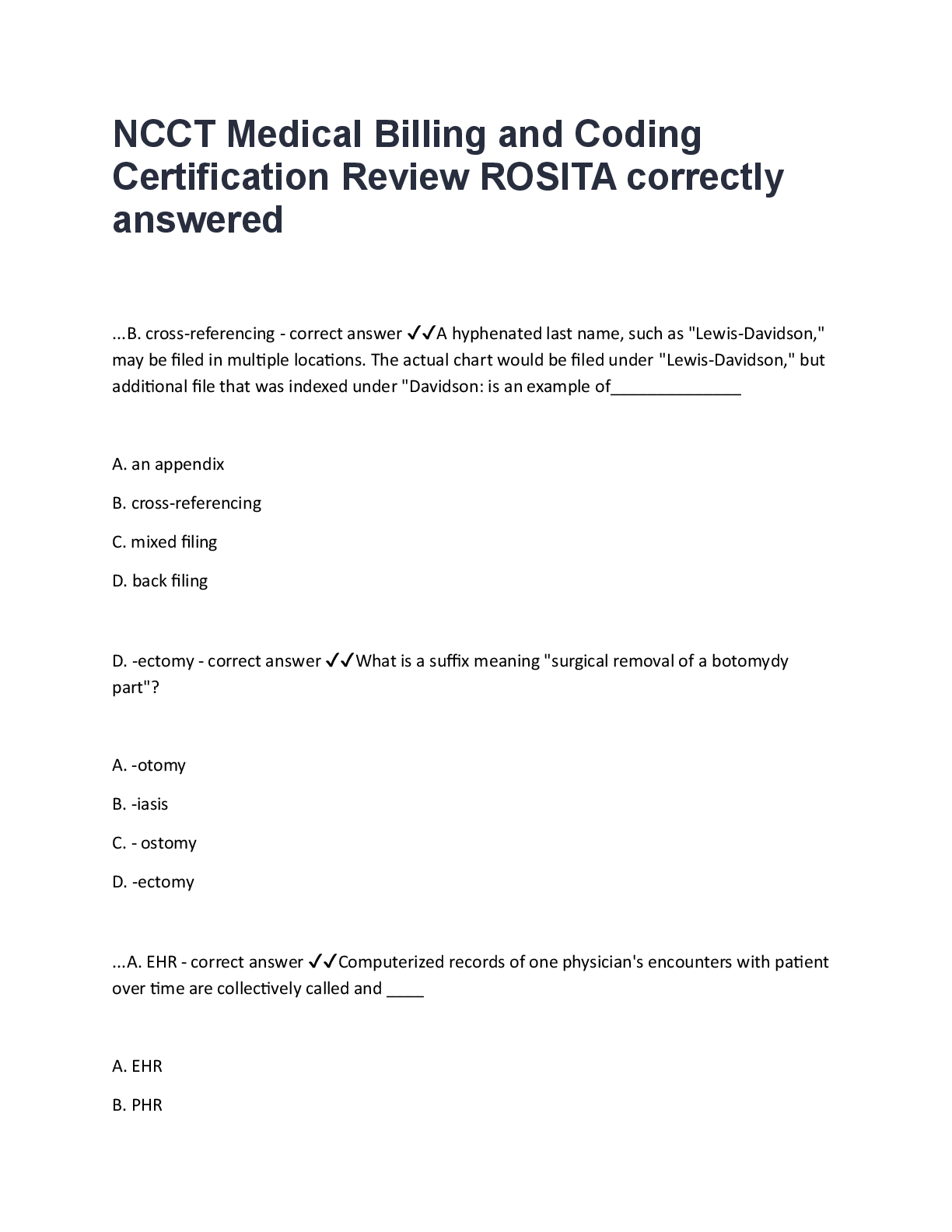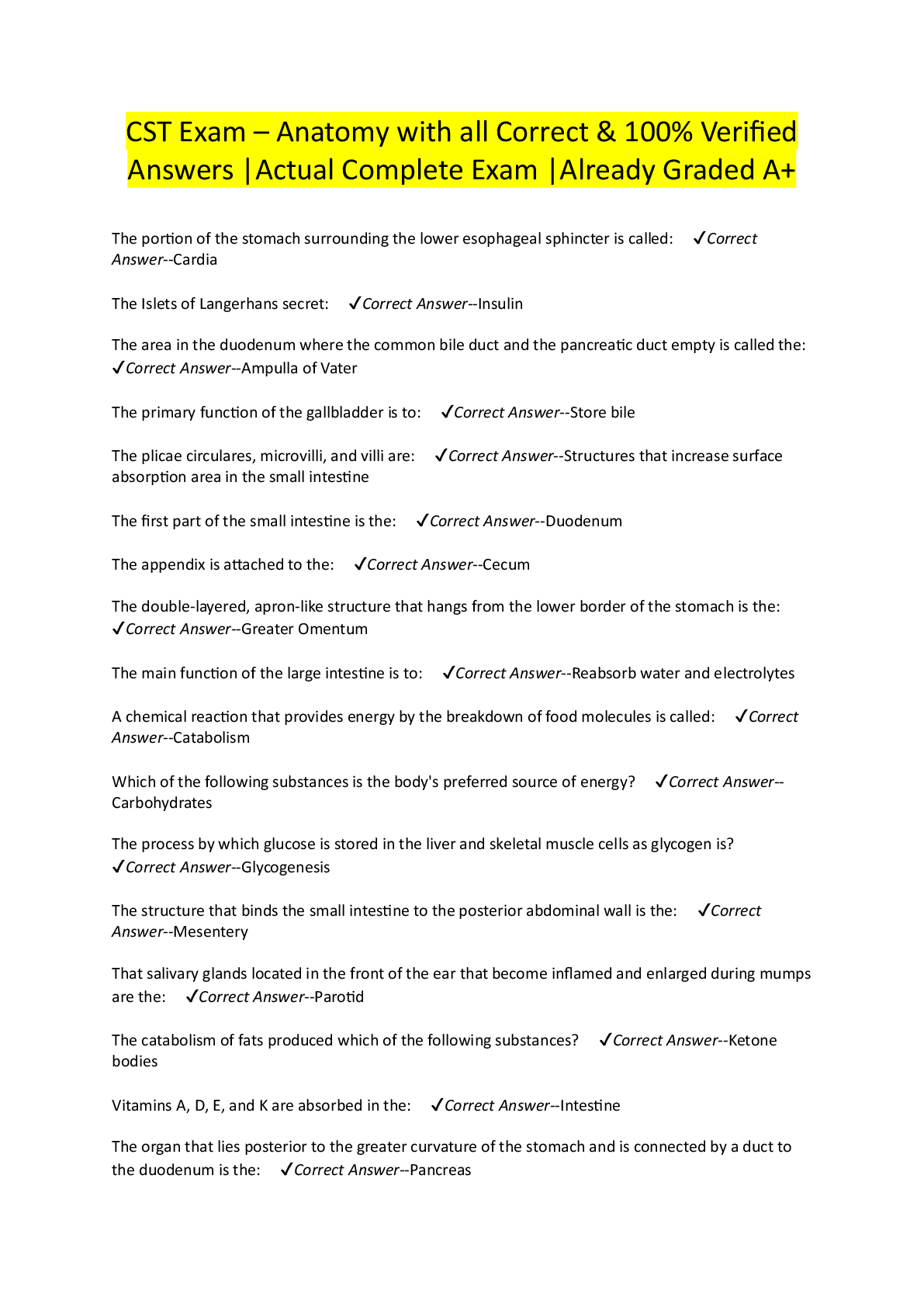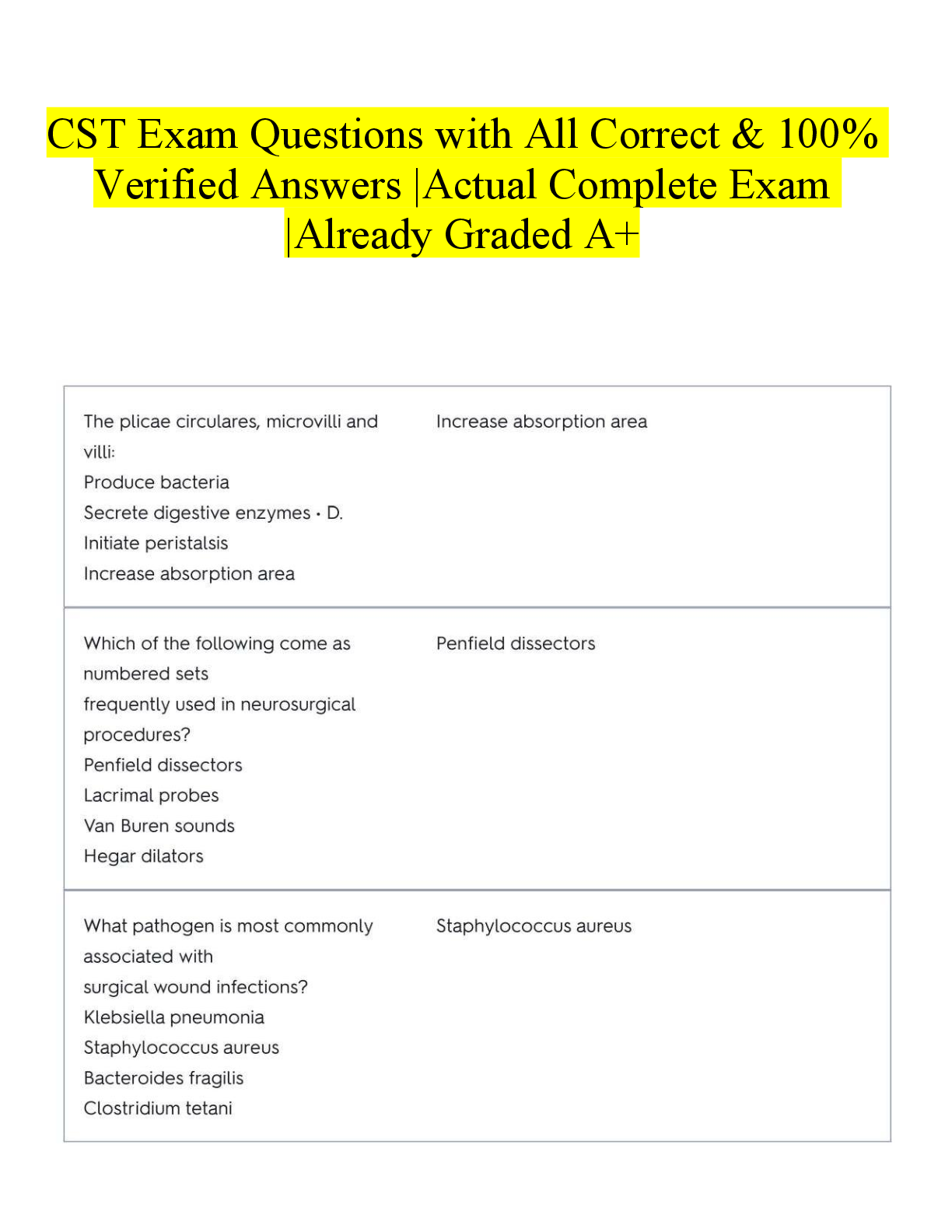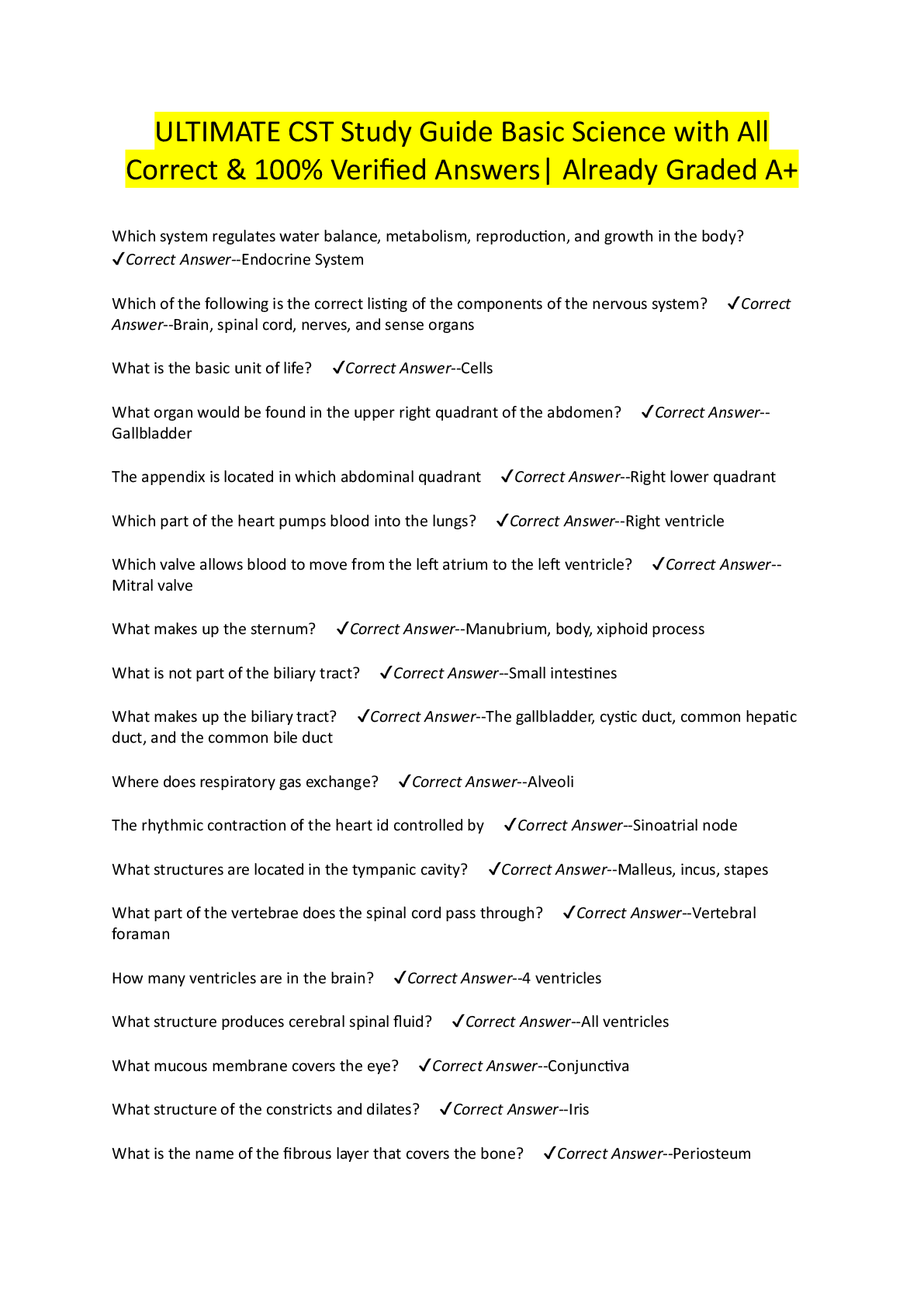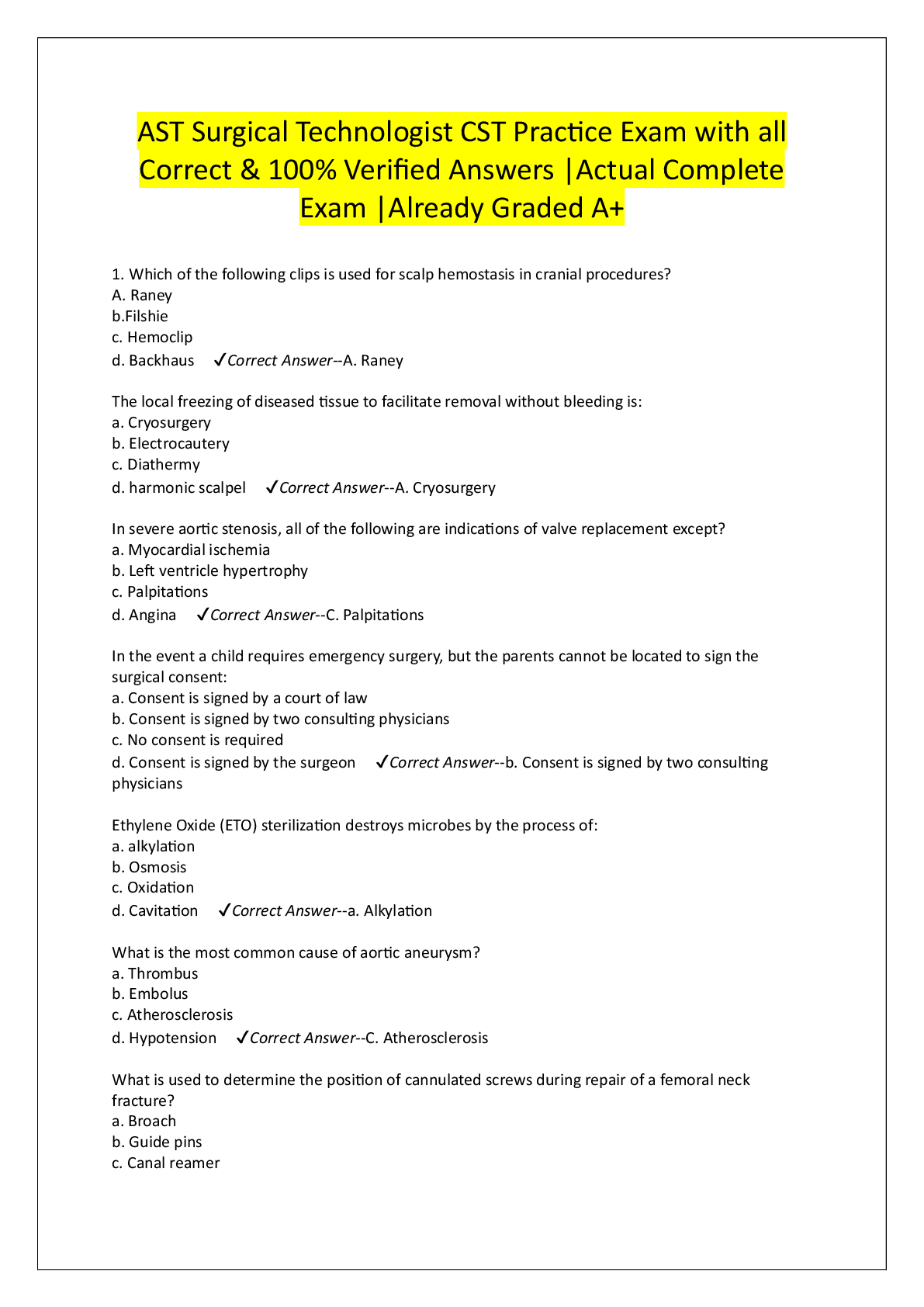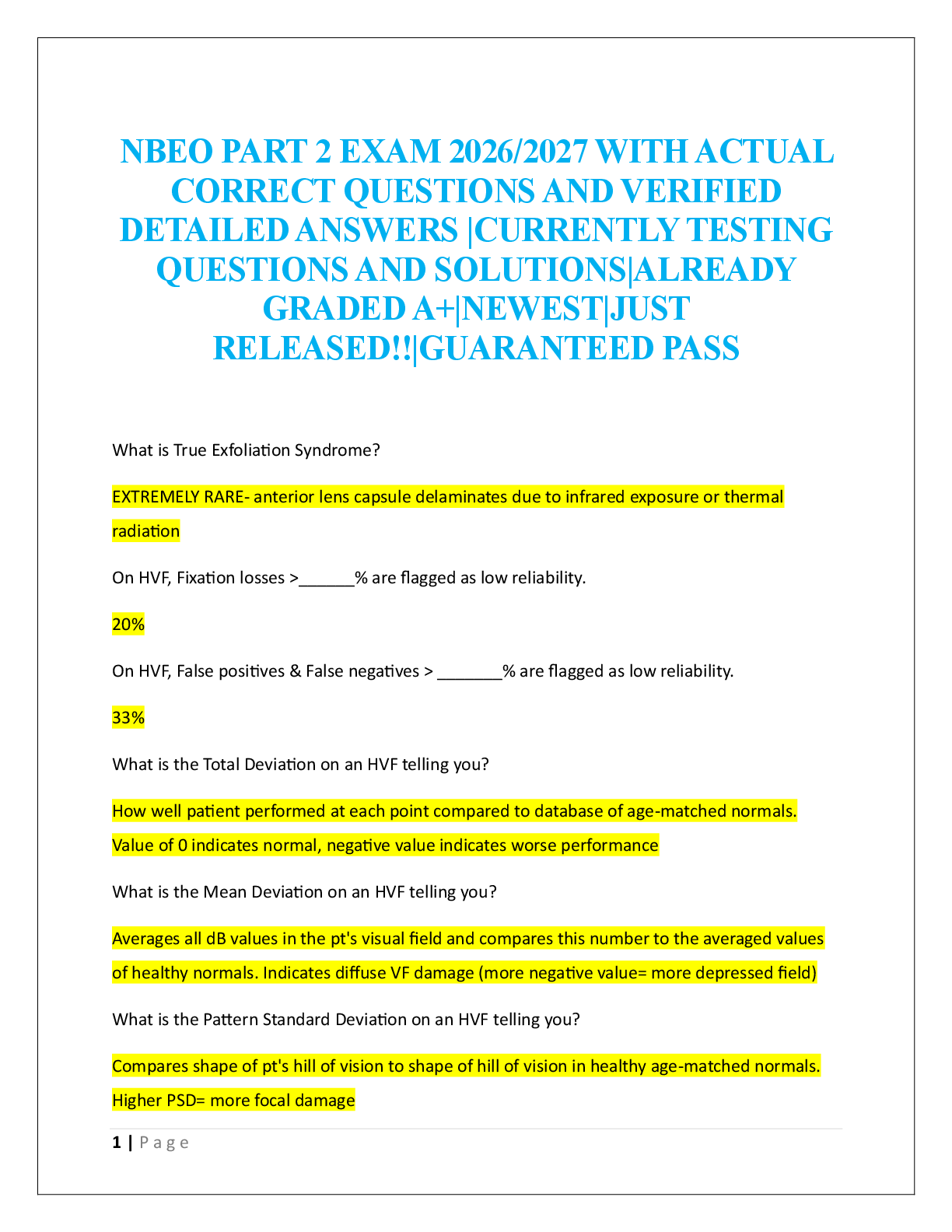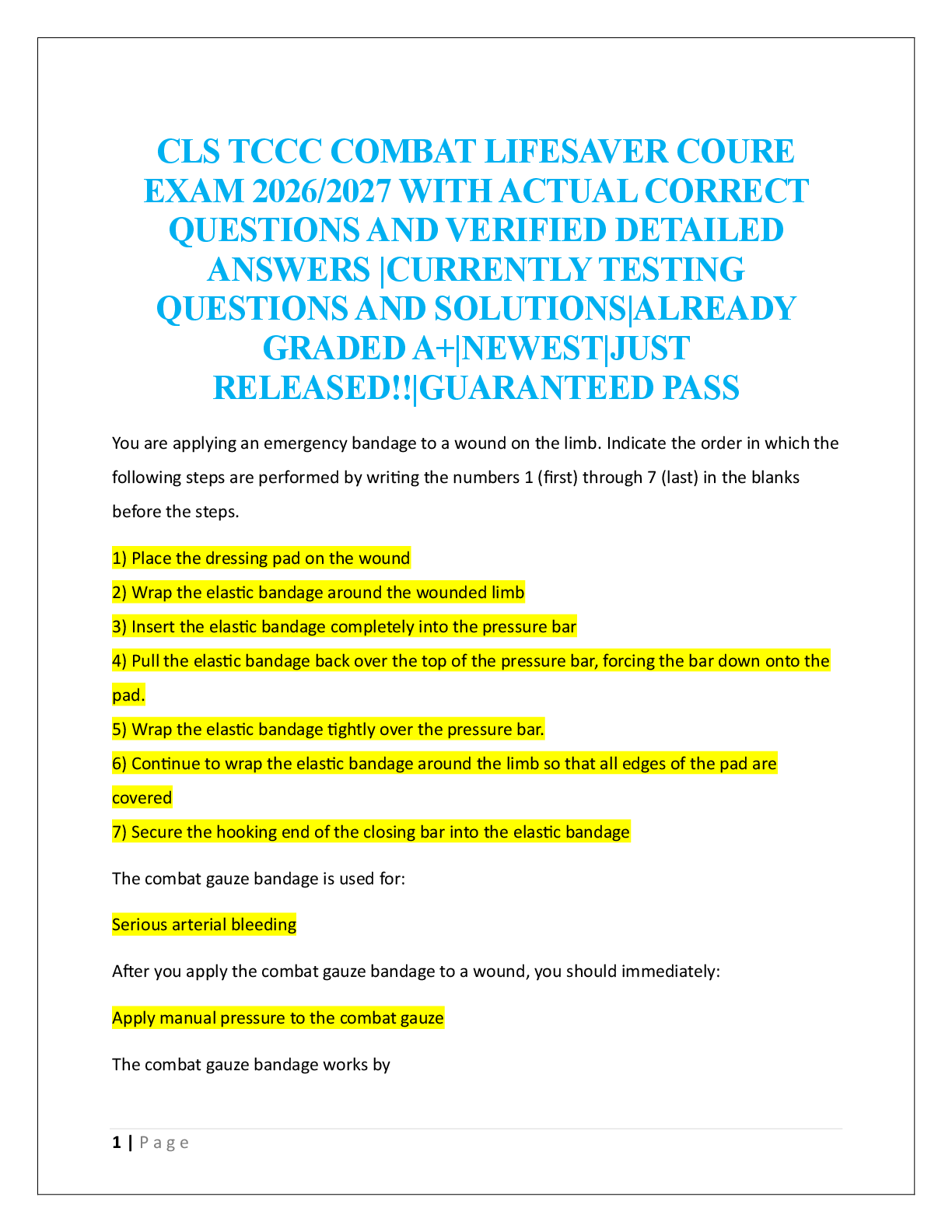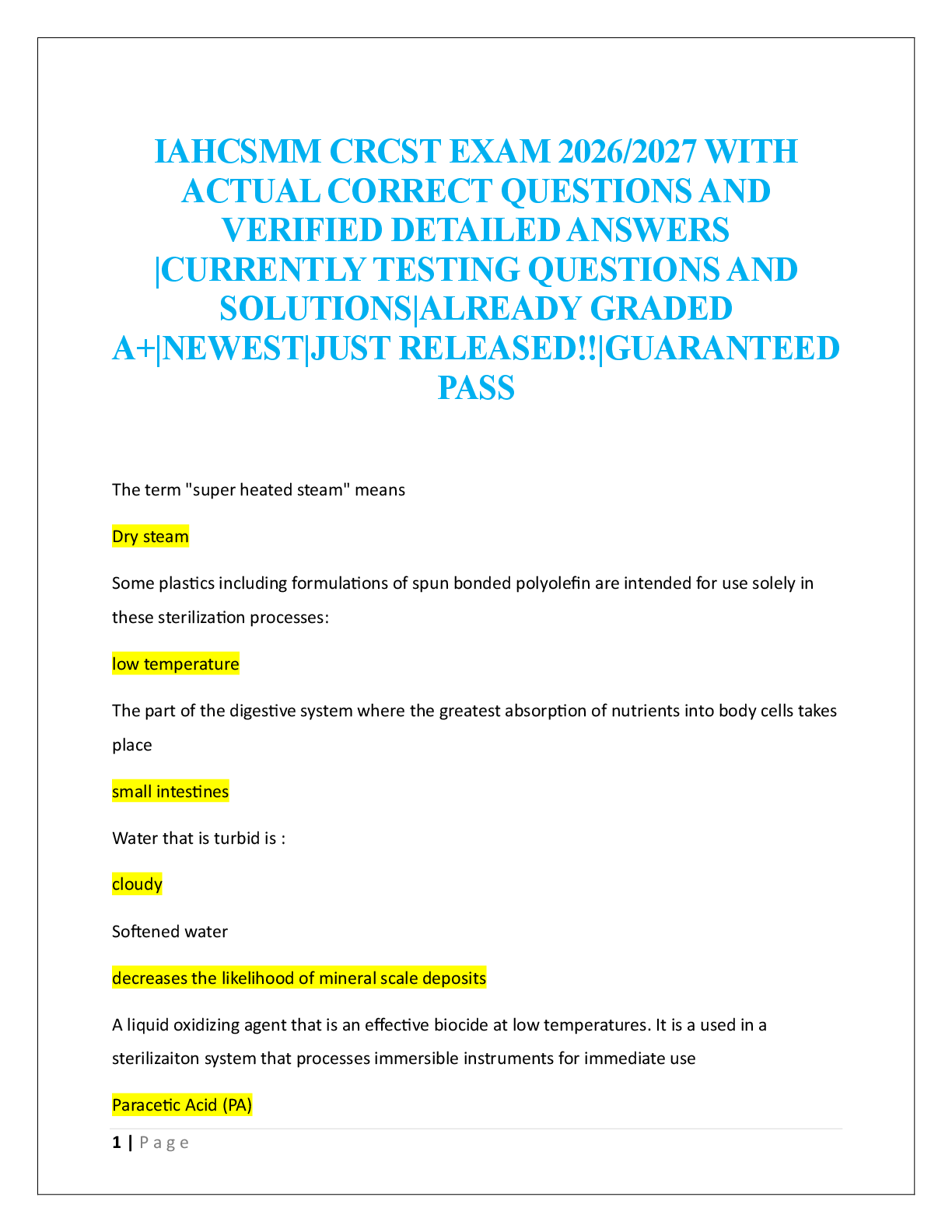ATI comprehensive Assessment PN questions with complete solution 2023
Document Content and Description Below
Red Blood Cells aka Erythrocytes females 4.2 to 5.4 million males 4.7 to 6.1 million Abnormally low RBC level Anemia White Blood Cells aka Leukocytes Essential cells of the immune ... system. Normal levels: 4,000 to 11,000 elevated WBC count Laboratory value indicative of infection. decreased WBC immunosuppression Iron females 60-160 mcg males 80-180 elevated iron hemochromatosis, iron excess liver disorder, magaloblastic anemia decreased iron anemia or hemorrhage platelets, aka Thrombocytes Clotting fragments of the blood system. Normal level: 150,000 to 400,000 increased platelets malignancy or polycythemia vera reasons for decreased platelets autoimmune disease bone marrow suppression or enlarged spleen Hbg females 12-16 males 14-18 decrease in Hemoglobin and Hematocrit Important lab values to monitor in anemia Hematocrit females 37%-47% males 42-52% anemia in children Signs and symptoms pallor, brittle spoon shaped nails aka clubbing, irritability, muscle weakness, systolic heart murmur, enlarged heart, Heart failure Patient teachings for patients taking iron supplements give 1 hr before or 2 hr after antacid to prevent malabsorption. Nausea, vomiting, and constipation are common at start of therapy. use straw for liquid iron to prevent staining of teeth aPTT 1.5 to 2 times the control range of 30 to 40 seconds. test clotting factors. Monitor heparin therapy. Reasons for an increased aPTT hemophilia. disseminated intravascular coagulation, DIC. Liver disease PT, Prothrombin time 11 to 12.5 seconds Specific to assessing Warfarin drug therapy, anticoagulant. increased PT, Prothrombin time evidence of deficiency or clotting decreased PT, Prothrombin time evidence of vitamin K excess, can lead a patient to bleed out acute hemolytic blood transfusion reactions **low back pain, TACHYcardia, HYPOtension febrile adverse reactions after a blood transfusion Occurs 30 minutes to 6 hr after transfusion. chills, fever, flushing, headache use WBC filter, administer antipyretics mild allergic reactions during or up to 24 hours after transfusion. Itching Uticarial hives flushing administer benadryl Signs of anaphylactic shock wheezing, dyspnea, cyanosis, hypotension. 1st intervention: Maintain Airway, then administer Oxygen, I.V. fluids, antihistamines, corticosteroids and vasopressor fluid overload signs and symptoms HYPERtension, jugular vein distention, peripheral edema, orthopnea, crackles at base of lungs, sudden anxiety sepsis and septic shock signs and symptoms Fever, Nausea, Vomiting, abdominal pain, chills, HYPOtension. 1st action; administer antibiotics, then obtain blood cultures. if disseminated intravascular coagulation (DIC) 1st action: Administer i.v. heparin asap. blood products and clotting factors are given in late stage recovery. PICA eating things like soil, chalk, for at least 1 month parenteral iron injection method given Z track erythropoietin - epoetin alfa (epogen, Procrit) Drug used to increased production of Red blood cells. Monitor for any increase in Blood pressure, Hemoglobin, and hematocrit. Folic Acid patient teaching Will turn urine dark yellow or orange. Supplement is necessary for new RBC, Red blood cell production. hypovolemia causes Peritonitis, Ascites, Severe burns, NPO status of patients. causes of dehydration Hyperventilation, Diabetic Ketoacidosis, Tube feeding without sufficient water intake. subjective and objective HYPOvolemia Hyperthermia, Tachycardia, HYPOtension, decreased central venous pressure, hypoxia, thirst, dizziness, Nausea, vomiting, poor skin turgor, tenting of the back of the patients' hand. Expected lab test results for hypovolemia An Increase in; Hematocrit levels, specific gravity, protein, BUN, and glucose levels. Hypervolemia causes Heart Failure, cirrhosis, increased gluccorticosteroids use, use of hypertonic i.v. fluids HYPERvolemia signs and symptoms bounding pulse, HYPERtension, confusion, muscle weakness, ascites, diminished breath sounds, distended neck veins. Expected lab results for HYPERvolemia Decreased: Hematocrit level, BUN, electrolytes, respiratory alkalosis. PaCO2 less than 35. notify doctor if weight gain 1-2 lb in 24 hours or 3 lb in a week foods high in potassium avocados, broccoli, dairy products, dried fruit, cantaloupe, bananas HYPOcalcemia signs and symptoms positive chvosteks, marked by Facial twitching. positive trousseau sign, marked by a hand/finger spasm with blood pressure cuff inflation. excess caffeine causes excretion of calcium in urine secondary osteoporosis results from hyperparathyroidism, long term corticosteroid use, long term anticonvulsant (Dilantin) manifestations: kyphosis [Show More]
Last updated: 2 years ago
Preview 1 out of 50 pages
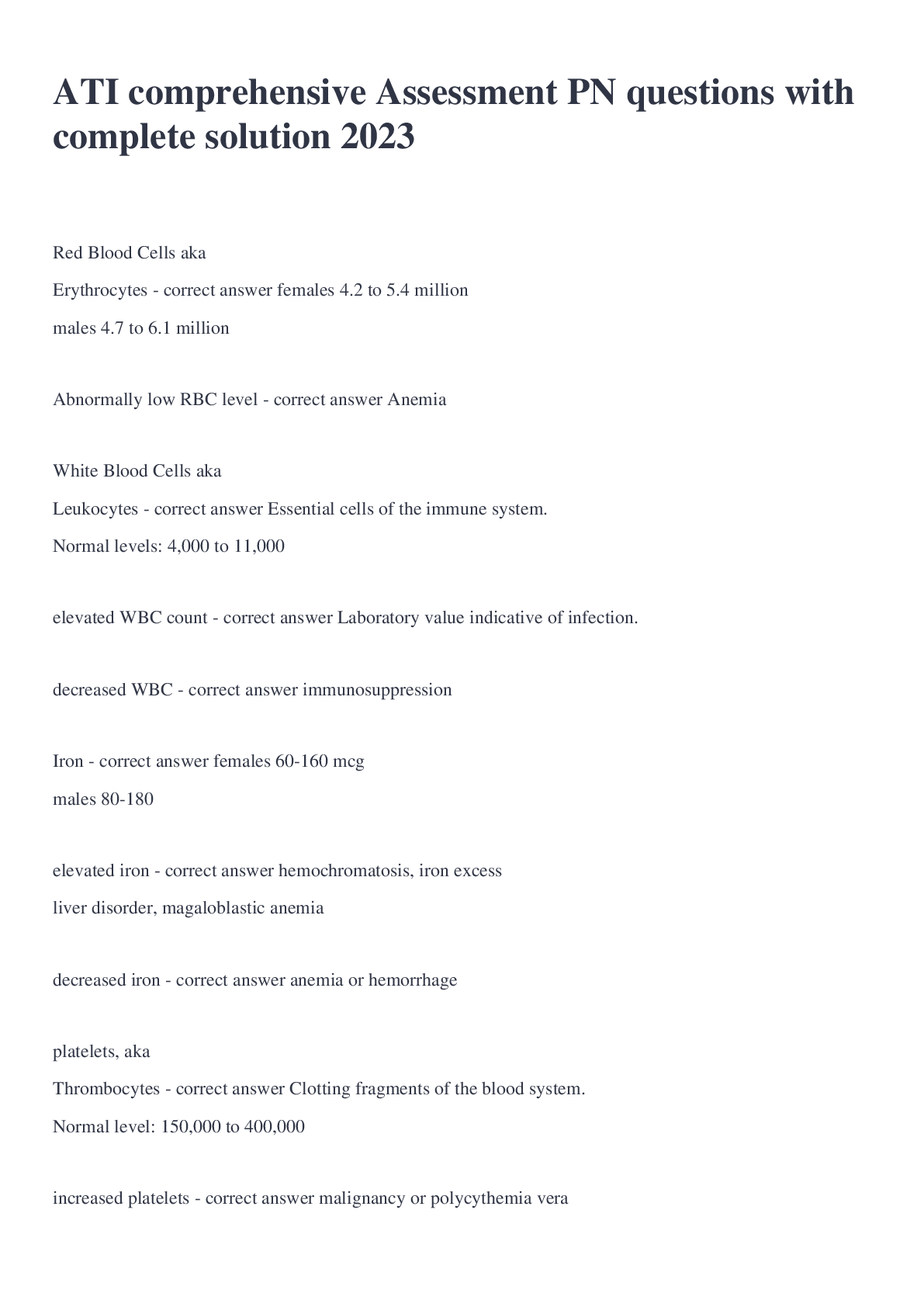
Buy this document to get the full access instantly
Instant Download Access after purchase
Buy NowInstant download
We Accept:

Also available in bundle (1)
Click Below to Access Bundle(s)

Package deal for ATI-PN exam updated 2023
ATI comprehensive Assessment PN questions with complete solution 2023 PN Management 2017 A(updated) ATI correct answers to pass ATI PN Comprehensive Predictor Review(updated)fully solved ATI...
By Favourfourtune 2 years ago
$67.5
19
Reviews( 0 )
$27.00
Can't find what you want? Try our AI powered Search
Document information
Connected school, study & course
About the document
Uploaded On
Feb 07, 2023
Number of pages
50
Written in
All
Additional information
This document has been written for:
Uploaded
Feb 07, 2023
Downloads
0
Views
143

